The cold, wet weather did arrive, as predicted but it failed to put a damper on our day. (pun intended) The soggy an very chilly conditions set the mood for our day long explorations at Portsmouth Historic Dockyard. The grounds contain Four Museums, Boathouse, Action Stations and four ships: HMS Victory, HMS Warrior, HMS M.33 and The Mary Rose. We saw about half of The Dockyard over our six hour visit and easily could have spent another day or two, such an incredible place to visit!
We began our tour in Boathouse 4 dedicated to the repair and restoration of small craft. where boats were floating in a small canal, hanging from the ceiling, others stood old and quaint and beautiful and the woodshop new ones were being built. Tools, rope-work and knot tying, vintage signs, nautical definitions, model ships, a climb-the-rigging to the crow’s nest activity, (too bad you weren’t there Al), a nautical “dress-up box” (for Wendy) and even an active shipbuilding school are all housed in the massive building.
Our next stop would have been aboard the HMS Warrior but it was closed. Notice the Amazing mural on the background wall of 3 Dreadnoughts perhaps on their way to the Battle of Jutland. Some of these may have been built in Portsmouth.
miniature boats “tooted around” this pond all day
The large building next to the pond housed a series of exhibits showing men and women performing the many skills and jobs involved in ship design and building, the construction and operation of ship components, service and maintenance. There was a small encyclopedia’s worth of information provided through its visual displays and descriptive placards.
With a break in the rain, we headed for HMS Victory where we were able to tour all four decks and view the canons(called pounders) and other weapons, 104 in total. We saw the sleeping quarters (aka hammock city), sick bay and The Galley, with an amazing stove where huge copper pots heated soup and gruel, chickens could be roasted on a spit and food storage crocks and barrels were stacked nearby. A small copper still transformed seawater into fresh which was reserved for men on the sick list. Meat servings were rare and most fish and meat were prepared from dried and salted produce. Sailors were given strict rations of gruel and hardtack, however both officers and sailors could bring their own chickens or animals on board to be slaughtered as required. (and you thought taking a sandwich to work was a task!)

food for 480 men was prepared in this tiny space
The planks on the decks are over 200 years old and are etched by guns and feet running over them. The ceilings are low and the light is dingy. It is easy to imagine the sights, sounds and smells during battle with the deafening canon noise, orders being shouted, smoke, fog, rain, rough seas and pandemonium! Although most battles were fought in full sail, sometimes ships were anchored at sea. It took several sailors to turn the gigantic winches on each deck to move the cables, lowering and raising the anchor.
HMS Victory was launched in 1765. She ran aground in 1799 and was so badly damaged, that a stripping and rebuilding was necessary. Extra gun ports were added, the magazine was lined with copper, the figurehead replaced and the the paint scheme was changed from red to black and yellow. The resulting pattern around the gun ports called “The Nelson Chequer” was adopted by all Royal Navy ships after Nelson’s death. Victory fought in four battles before the renowned Battle of Trafalgar, 1805 where Lord Nelson was killed when a French musket ball entered his shoulder and lodged in his spine. The spot where Nelson fell is marked with a small plaque on the ship’s upper deck.
Nelson’s quarters, known as The Great Cabin, were fascinating with his table,logbook and maps laid out for the admiral to read by candlelight. The space contained a bedroom and private loo, Persian carpets and finely crafted wooden furniture: a writing desk, a large table for Nelson and his officers to dine or strategize battle plans and a side board filled with fine china, glasses and cut-glass spirit decanters. A bank of windows across the bulkhead made the room feel airy against the cold and damp. The docent explained that during battle, the carpets would be rolled up, furniture stowed, hidden gun ports would be opened and wooden shutters closed, protecting the crew and cabin from shattering glass.
Unlike the hearty sailors who braved the sea for weeks on end, we shivered our way through the rain, disembarked HMS Victory, ready to rest over a bowl of hot Curried Parsnip Soup, crusty grain bread and mugs of steaming coffee.
soupspoons from the Mary Rose
Warmed but still damp, we toured the ‘'Temporary” Museum of Henry VIII’s royal ship,the Mary Rose. The remains of the ship are not currently on display as ongoing reconstruction continues in the museum. We were able to view an informative film about its sinking, its recovery and the creation of the current display. Mary Rose, that sank in 1554, is famous for the large number of artefacts that were preserved under the silt and provide incredible historic records of the time period. Some of the originals and many reproductions are on view to appease the disappointed tourists, like us, who are unable to view the actual ship remains and museum. I guess we’ll just have to go back when its finished. ![]()
the actual bell from the Mary Rose
musical instruments and tiny weigh scales
even leather survived in the silt!
Our next stop was a visit to the dry docks that hold HMS M.33 , the Royal Navy’s sole remaining survivor from the Gallipoli Campaign.
Escaping the bitter day and pouring rain, we entered The National Museum of the Royal Navy to be treated to fabulous displays of model ships, medals and trophies, beautifully crafted ships’ wheels, clocks, weather and communication devices, dioramas of Navy scenes as well as nautical paintings and photographs.
Just when we thought we could absorb no more, we pulled out our ‘hearty sailor’s attitudes’ and entered the Figurehead Collection. Viewing the vibrant assembly of assorted carved and painted sculptures that once adorned various ships bows (the pointy end) was inspiring and amusing.
this guy has to make you smile!
A model of the boat that transported Lord Nelson’s body up the Thames to his funeral at Westminster Abbey, paintings of Nelson, some personal effects and his death mask were on display.
Our last half hour a the Portsmouth Dockyards was spent racing through the Royal Marines Museum before closing time. It features paintings of naval heroes, battles, battleships, marine mascots and nearly 8,000 medals including ten Victoria Crosses.


We sure had worked up an appetite and the sun had broken through the clouds so we had a pleasant walk to Loch Fyne, a great seafood restaurant. We’d enjoyed a meal in their sister eatery in Edinburgh a few years earlier. With excellent service, great décor and fine wine, our fantastic fish dinner was a great way to end our day at the docks!
it was refreshing looking at non-nautical architecture and vehicles
It’s no longer “Home James”….but Home Uber!






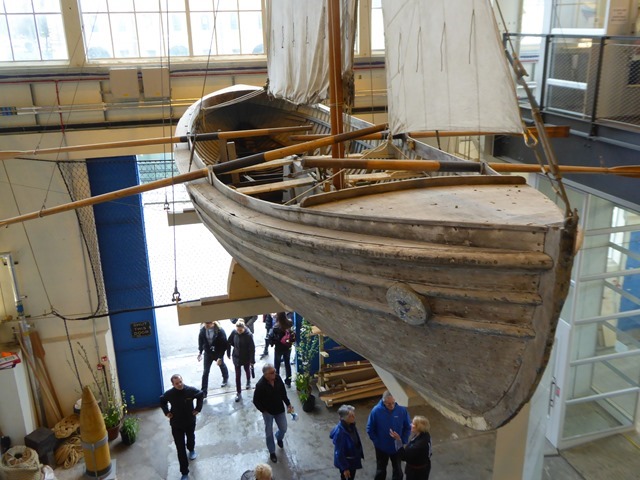

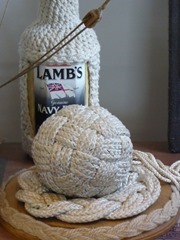




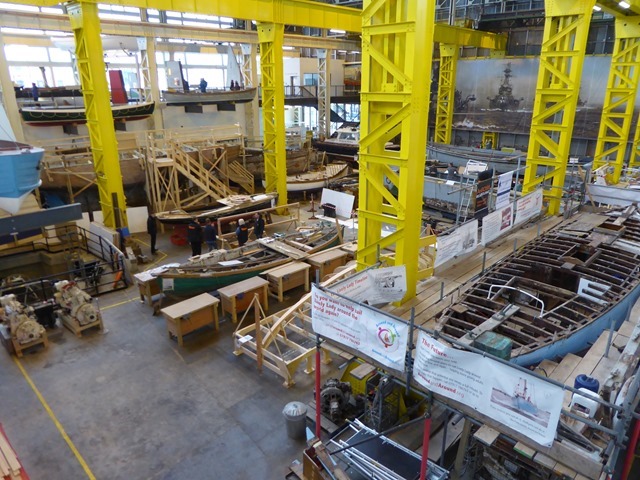
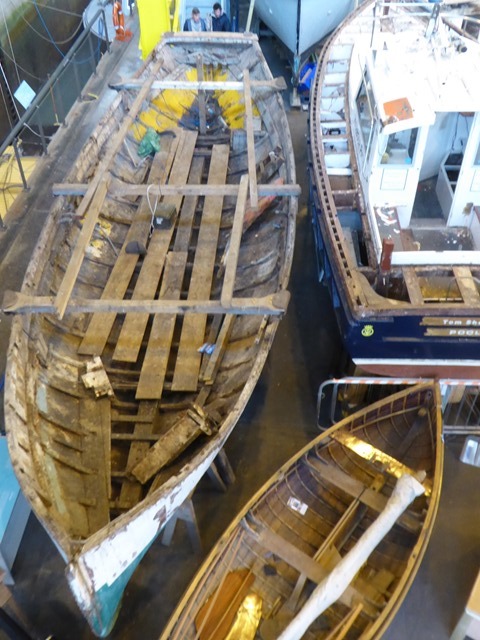

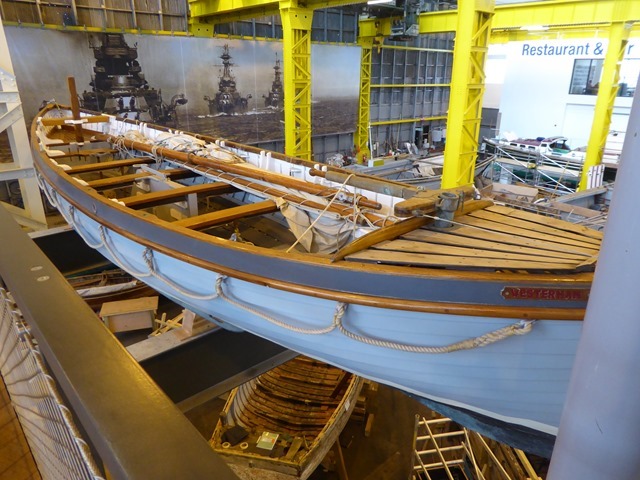


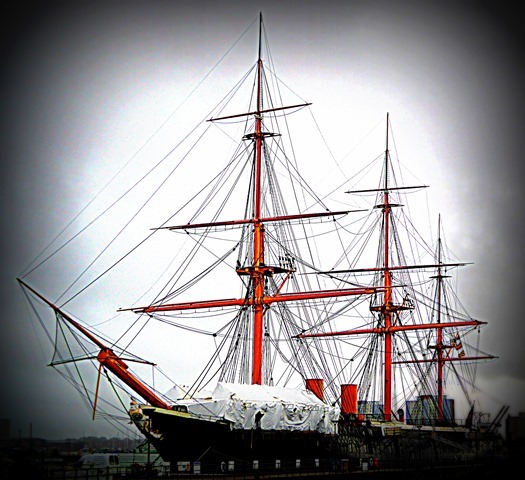











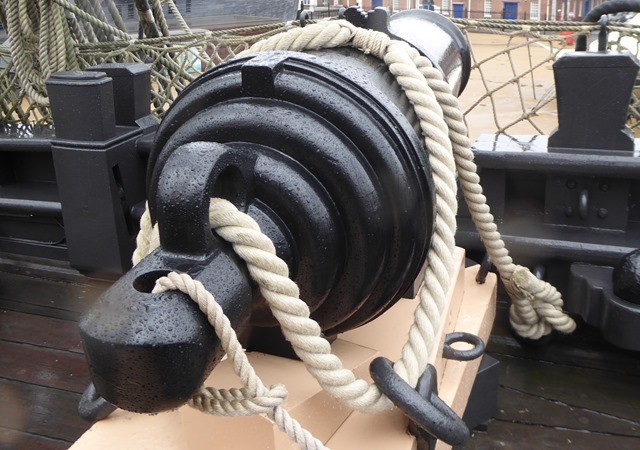



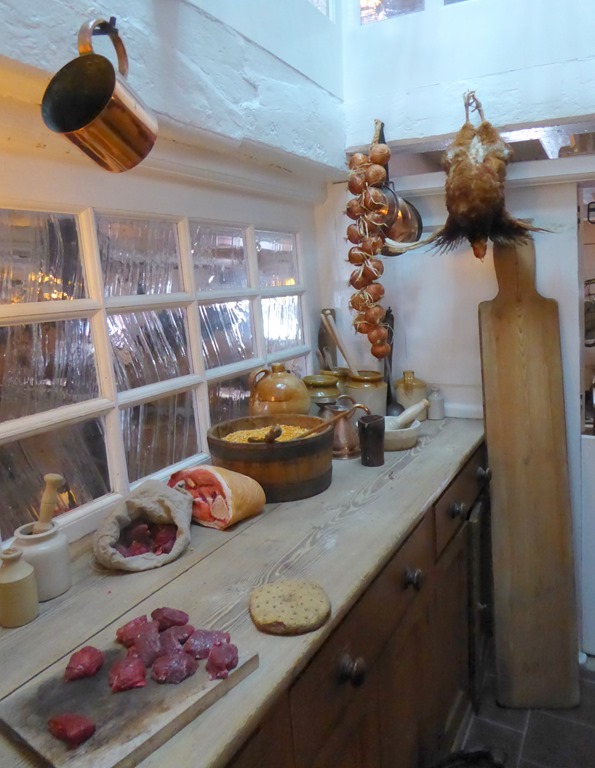








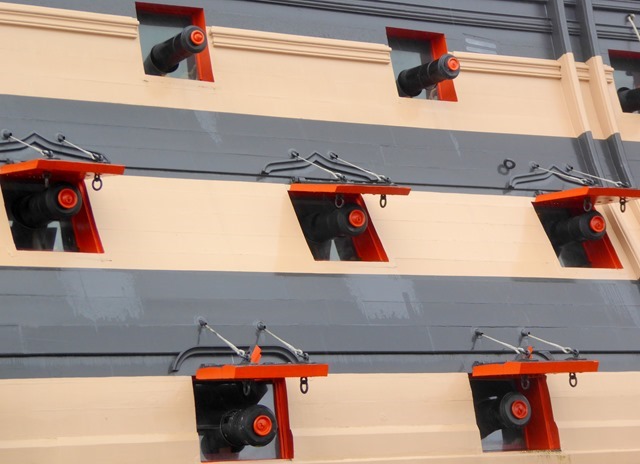




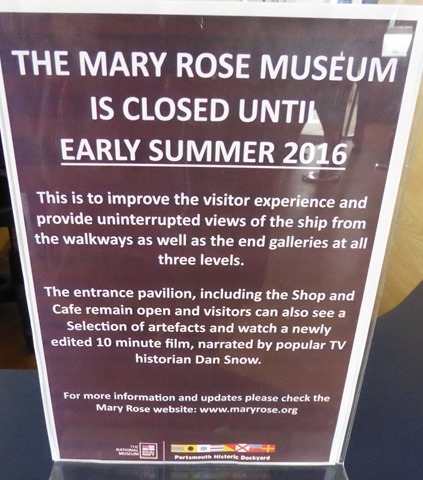
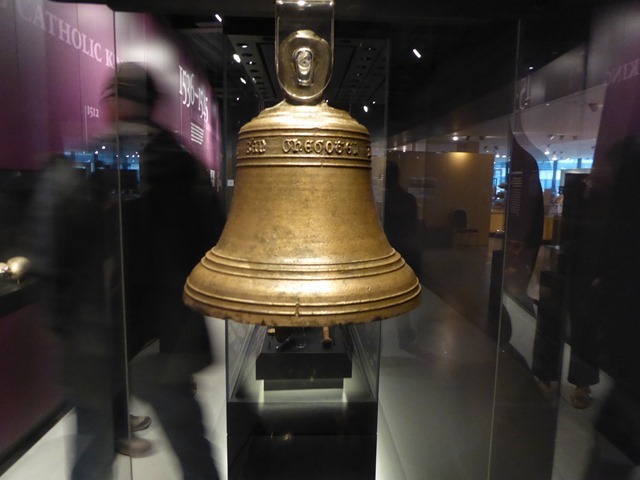



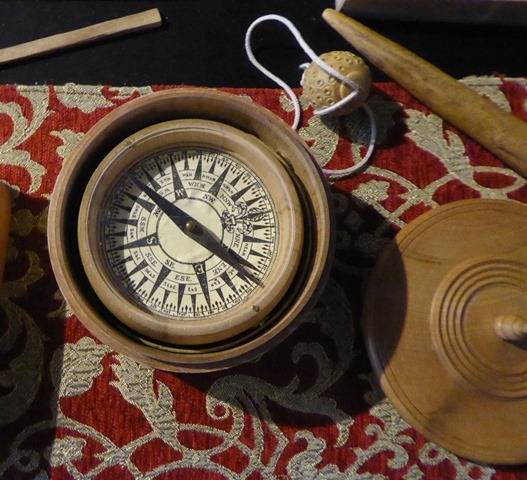

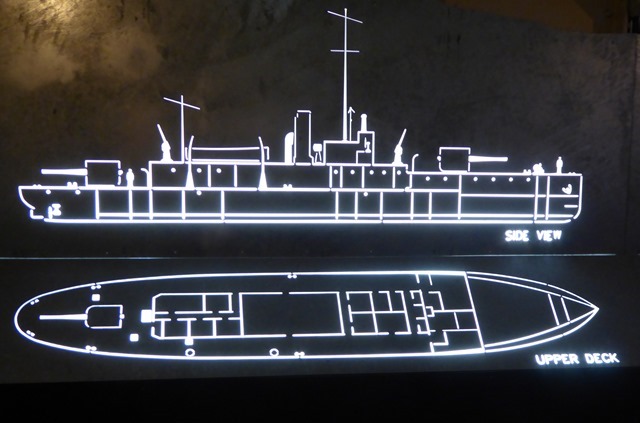

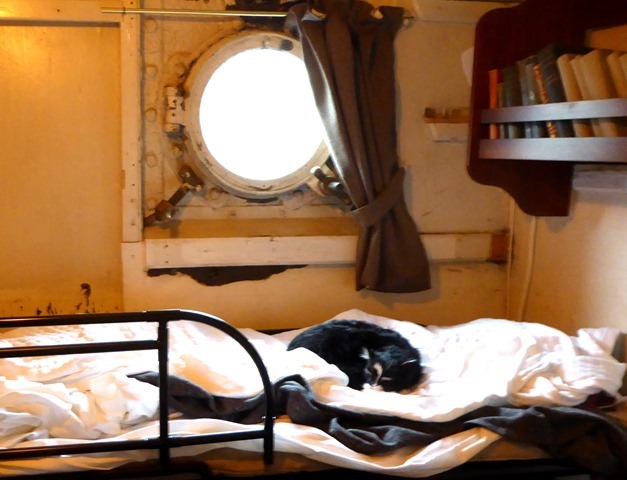
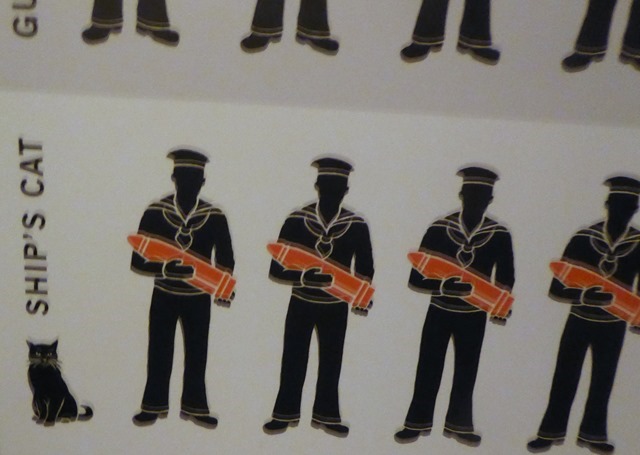



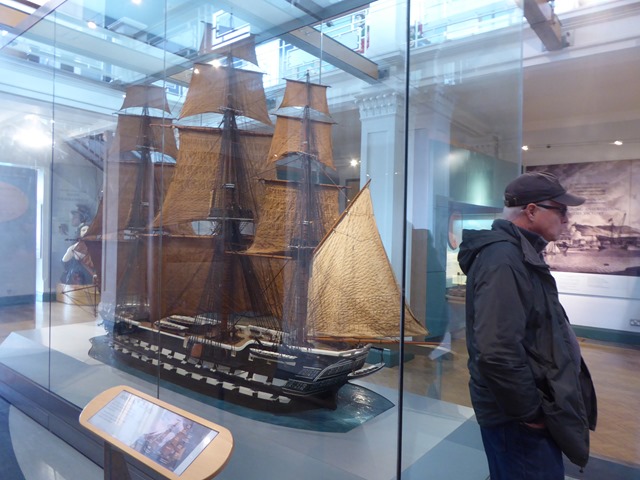



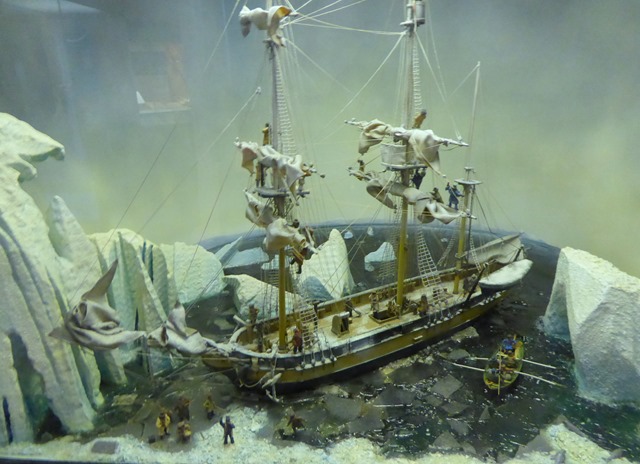
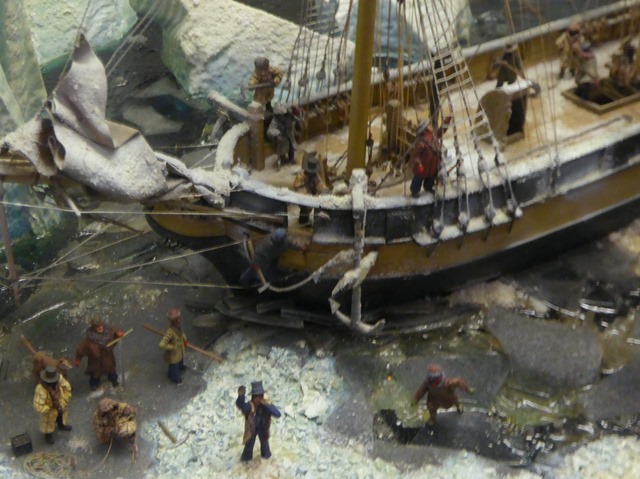


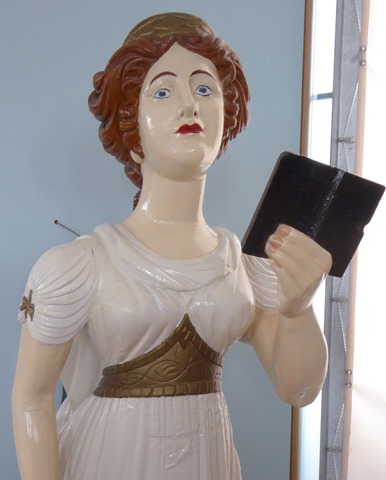







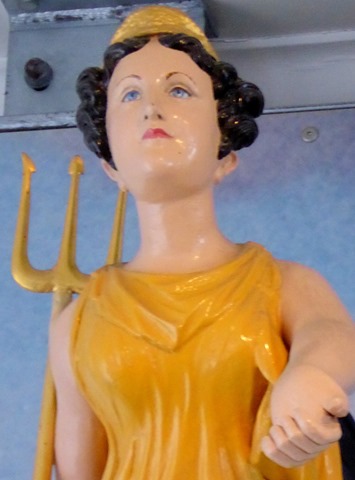









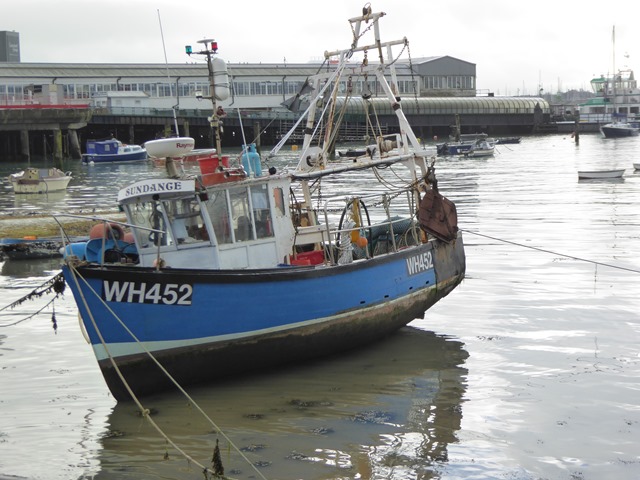

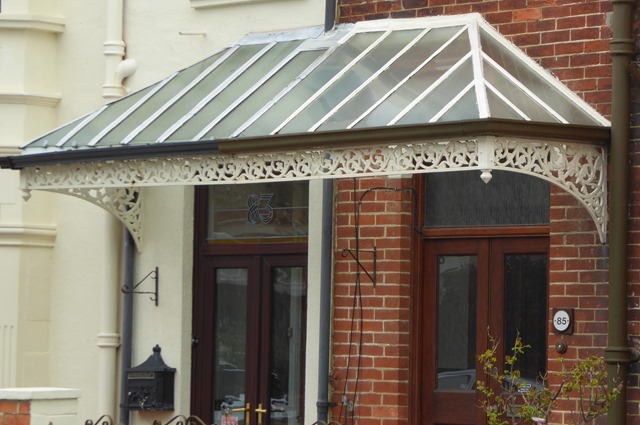



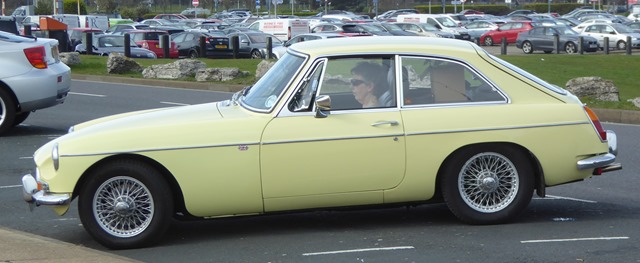
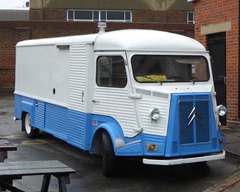
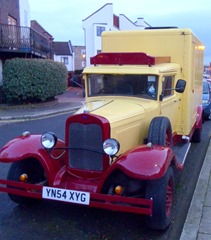



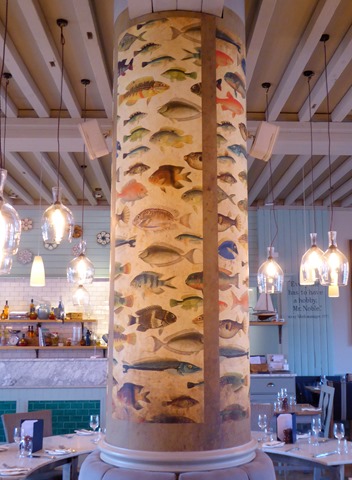


No comments:
Post a Comment
Note: only a member of this blog may post a comment.